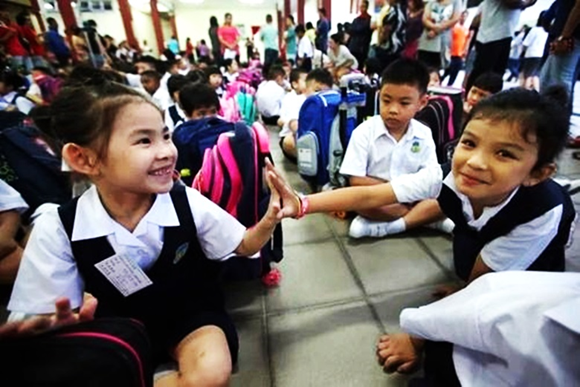
For several consecutive weeks, Sin Chew Daily featured the issue of Malaysian Chinese population structure. The trend of declining birth rates among the Malaysian Chinese began over 20 years ago, which leads the community to become an aging society. Today, the entire demographic structure of the Malaysian Chinese community has changed.
Changes in the population structure do not occur overnight. Even if we are powerless to reverse the trend of population decline and aging, we must not ignore it. At the same time, we should begin to reflect deeper on future direction.
Chinese education will likely be the most impacted by the population decline. Let me begin with the birth rate of Malaysian Chinese newborns.
The year 2024 was a Dragon Year, traditionally a peak period for births due to cultural beliefs. However, according to the Department of Statistics Malaysia (DOSM), in the first three quarters of 2024, the number of newborns among the Malaysian Chinese decreased compared to 2023. Although there was a slight rebound in the fourth quarter, the overall number still fell short of the previous year.
In Q1 2024, the number of Chinese newborns was 9,372, a drop of 2,062 or 18% compared to 11,434 in Q1 2023.
In Q2, there were 9,786 newborns, down 1,291 or 11.6% from 11,077 in 2023.
In Q3, the number was 10,427, a decrease of 735 or 6.6% from 11,162 in 2023.
Only in Q4 did the number rise to 11,685, a 4.65% increase over 11,142 in 2023.
In 2024, there were 41,270 newborns in total, 3,545 fewer than the 44,815 recorded in 2023.
According to data released by Huayan (the Centre for Malaysian Chinese Studies) in May, the birth rate among Malaysian Chinese has fallen by 60% over the past 23 years — averaging a drop of 2,559 babies per year. In 2023, each quarter still recorded five-digit Chinese birth figures, but by 2024, the first two quarters had already fallen into four-digit territory. It is now hard to imagine that in the year 2000, the Chinese community had six-digit annual births — as many as 115,000 newborns.
Let’s assume that all 41,270 Dragon Year babies born in 2024 will enter Chinese primary schools (SJKCs) in 2031. With 1,304 SJKCs nationwide, that’s an average of only about 32 new year one pupils per school.
If we further assume that half of these schools are under-populated schools with fewer than 150 students (currently, there are 614 such schools) and also consider urbanisation (with more Chinese families moving to cities), plus those who opt for private or international schools, then it’s likely that few Chinese schools will have 100 year one pupils in 2031.
Next, if we suppose that half of the 2024 Dragon Year babies will enter independent Chinese secondary schools in 2037, the 63 independent schools across the country would average 327 new junior one students each. Following this trend, by the time this cohort reaches senior three (Form Six), the number of independent schools with over 2,000 students in total would be extremely rare.
Looking further ahead to Q1 2025, DOSM recorded 93,500 newborns nationwide, down 11.5% from 105,613 in Q1 2024 — a new historical low. Among these, Chinese newborns numbered only 8,001, 1,371 fewer than in 2024 and 3,433 fewer than in 2023 — setting a new record low.
Worse still, like many urban communities worldwide, non-marriage and childlessness are becoming more common among Malaysian Chinese — major contributing factors to the declining birth rate. This means that in the future, the number of newborns will continue to drop year by year. The declining number of new pupils in SJKCs and Chinese schools is an unavoidable reality.
Therefore, it is time for all stakeholders in the Chinese community to seriously reflect on the future of Chinese education. We need to be mentally and practically prepared to face this dramatic shift in population structure.
Perhaps we could begin by discussing how to better integrate the resources in the community. A shrinking population also implies shrinking resources. As resources become increasingly scarce, should we be more prudent and strategic in our investments?
For example:
Is relocating schools more practical than building new ones?
Is it necessary to spend heavily on new infrastructure?
On another note, as the global landscape evolves, more non-Chinese parents are likely to enrol their children in Chinese primary schools. These pupils may help fill up the available spots. However, unless there is a dramatic rebound in Malaysian Chinese birth rates over the next decade, the day will come when non-Chinese pupils outnumber Malaysian Chinese in Chinese primary schools — and this may become a common occurrence.
When that time comes, what direction should the Chinese education take?
Perhaps now is the time to begin exploring the issue in-depth.
ADVERTISEMENT
ADVERTISEMENT


































